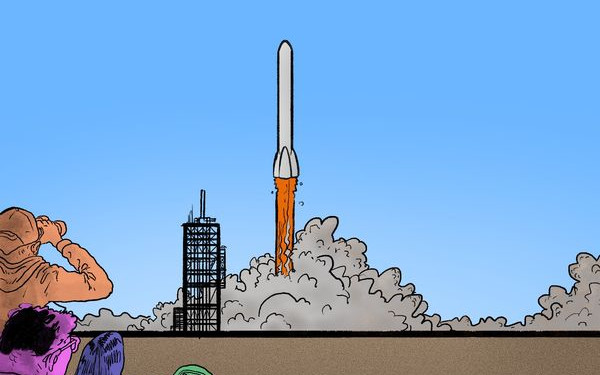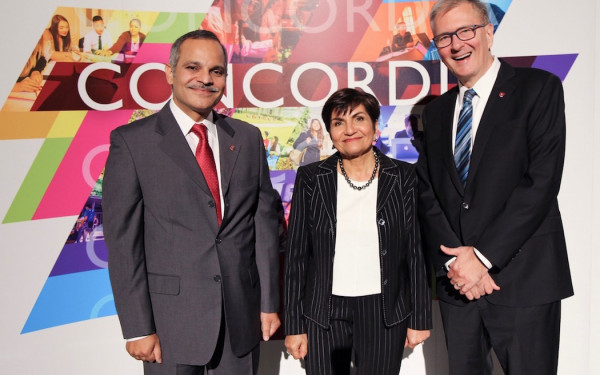Concordia’s Latest Pilot Project
UAV Association Sets Sights on International Drone Competition
In a lab, tucked into a corner at the end of a hallway hides a group of students with dreams of flight.
“Humans have always wanted to fly,” said Amirali Shankaei, president of the Association for Unmanned Vehicle Systems at Concordia. The fourth-year electrical engineering student is one of the 40-odd students that make up UAV, which designs and builds drones for competition.
While the club is only in its second year, they’re hopeful that they have what it takes to compete internationally. In 2016, the group is set to design and manufacture an unmanned aerial vehicle, or drone, that functions autonomously. The idea is that the team could program a task into the drone and sit back while it completes its work—with a remote control on hand, just in case something goes awry.
Firas Khelifi, director of competition projects for UAV Concordia, explained that the team will be travelling to three competitions over the next year: one in Manitoba, one in the Washington, D.C. area and one in the United Arab Emirates. The nature of each competition will vary, with challenges ranging from scanning a field for crop analysis to finding a way to use the technology for humanitarian work.
Khelifi explained that with a camera mounted onto their drone, they could create a 3-D map of an area in as little as three minutes, which could then be used to coordinate a search and rescue procedure.
According to Khelifi, this year’s international UAE competition is set to take place in October, and is the most daunting. However, with a prize of $1 million U.S., it’s also the most appealing.
“The UAE Government invites the most innovative and creative minds to find solutions that will improve people’s lives and provide positive technological solutions to modern day issues,” explains the competition’s website.
While their participation in the competition is not set in stone—it is hyper-competitive and only a limited number of entrants are accepted—UAV Concordia is doing all they can to increase their odds, including looking across faculty lines for help. Shankaei and Khelifi explained that to ensure they are looking at this challenge from every angle, they’ve built a partnership with a group of 10 students from JMSB, as well as graduate students and professors in the department of geography.
With the help of the department of geography, the engineering and science students that make up UAV Concordia gain a greater understanding of tasks that involve with 3-D mapping and agriculture. The club is able to better understand what sort of environmental issues exist and how their technology can be used to help solve those issues.
The JMSB students share their marketing expertise, helping the engineers fine-tune their presentations—crucial when they only have five minutes to present their concept.
It is this type of collaboration that excites the students behind UAV.
“In electrical engineering, you only learn electrical engineering,” Shankaei said.
The club gives students in highly specialized fields the chance to step back and understand practical applications for what they are learning. In an email, Shankaei and Khelifi wrote that the ultimate goal of UAV Concordia, “is to provide participating students hands-on experience and an environment where [there are] different mindsets to help them in their future careers.”
The hands-on experience includes real-life restrictions. Abiding to local flying laws is a must, as is having a Special Flight Operations Certificate if the drone weighs over 2 kg. This limits the areas in which it’s safe to fly a UAV, including away from tall structures and airports. Failure to follow these guidelines could result in up to $25,000 in fines, according to Transport Canada.
When all legal precautions are taken care of, they must also take into account the laws of nature. Shankaei and Khelifi wrote that, “the tough Montreal winter … has us grounded for a long period of time, meaning that we cannot test our drone until the weather gets better in the spring.”
However, the excitement in the air persists. “To see the thing you’ve made take off,” described Khelifi. “The feeling is overwhelming.”

_900_600_90.jpg)
_600_832_s.png)

_600_375_90_s_c1.jpg)
1_600_375_90_s_c1.jpg)

